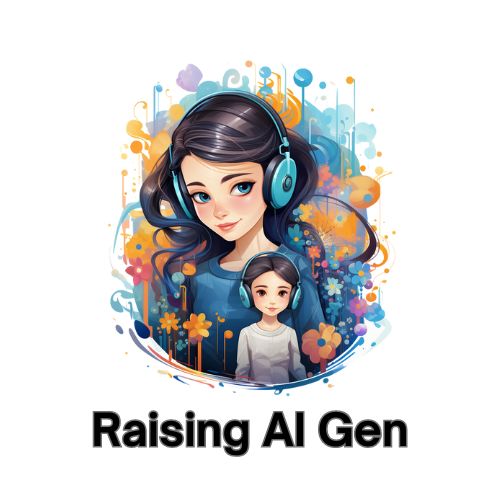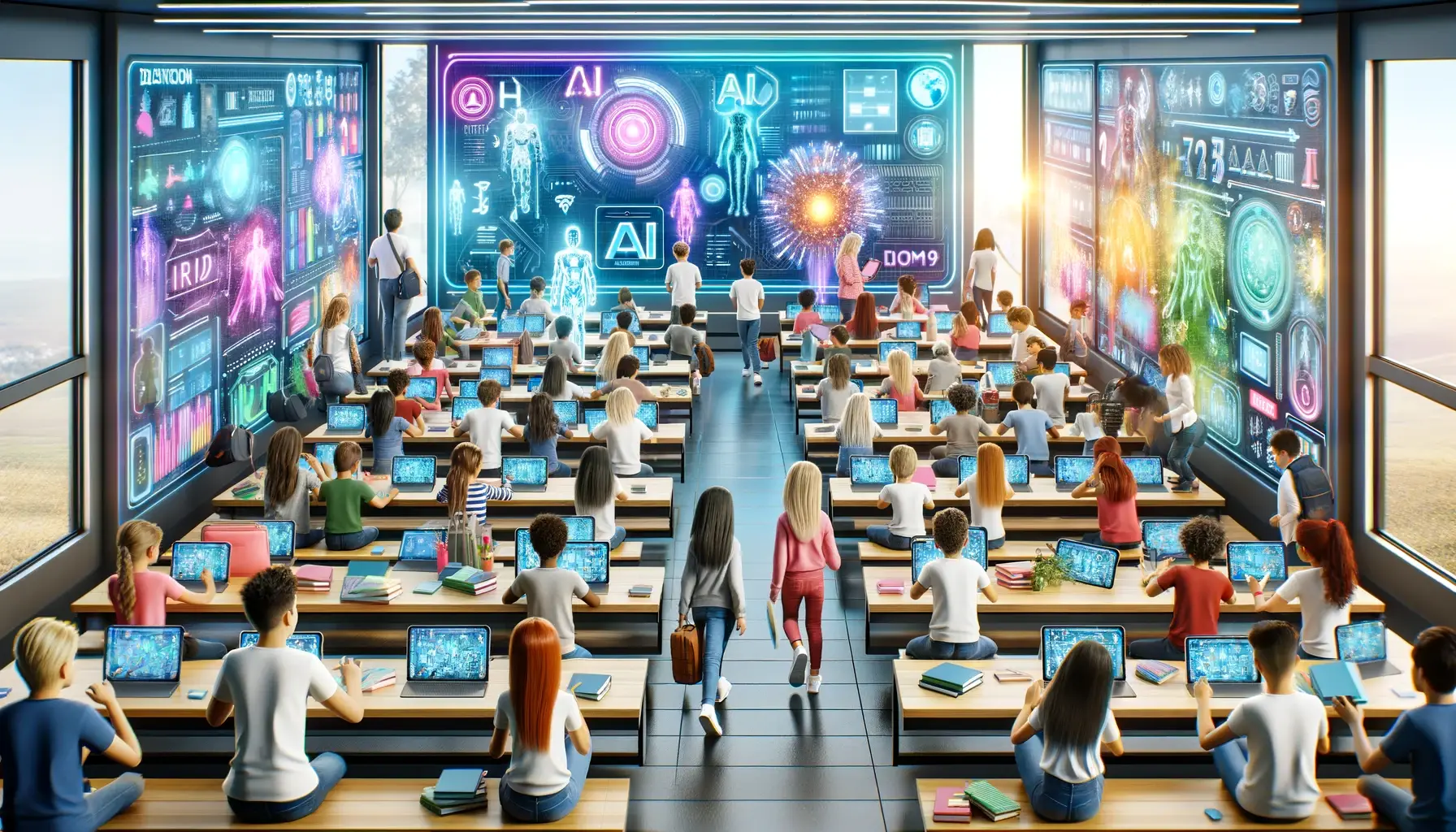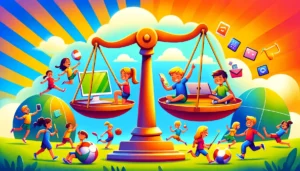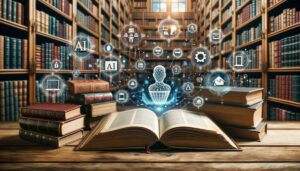How AI can help students: imagine a classroom where every student receives personalized attention, where learning is not just a process but an adventure tailored to each individual’s needs and interests.
This is not a distant dream; it’s the reality AI is crafting for students around the globe.
Key Takeaways
Theme Key Points AI’s Role in Learning AI is revolutionizing education by providing personalized learning experiences and engaging students in new ways. Benefits of AI AI offers immediate feedback, tailored lessons, and can reduce educators’ workload. Challenges and Limitations AI may struggle with complex situations and lacks the human element essential in education. Ethical Considerations Ensuring ethical use of AI is crucial, particularly regarding data privacy and algorithmic biases. Future Prospects AI holds great potential for education, but its role must be carefully balanced with human interaction.
The Rise Of Artificial Intelligence In Learning
In the digital age, AI has become the silent ally of students and educators, reshaping the educational landscape with its unparalleled capabilities.
Let’s delve into how AI is elevating the learning experience to new heights.
Personalized Learning: A Game Changer
AI’s ability to tailor education to each student’s unique needs is nothing short of revolutionary.
Here’s how AI is personalizing the learning journey:
- Adaptive Learning Paths: AI algorithms analyze students’ learning patterns, strengths, and weaknesses, creating customized learning paths that adapt in real-time.
- Immediate Feedback: Gone are the days of waiting for test results. AI provides instant feedback, allowing students to learn and improve on the fly.
- Engagement Through Gamification: AI integrates game mechanics into learning, making education an interactive and enjoyable experience.
One shining example of AI’s impact on personalized learning can be found in the realm of AI for Language Learning, where AI tools offer immersive and customized language acquisition experiences.
Transforming the Role of Educators
AI isn’t just a boon for students; it’s a powerful ally for educators as well.
Here’s how AI is reshaping the educator’s role:
- Automated Administrative Tasks: AI takes over time-consuming tasks like grading and attendance, freeing educators to focus on teaching.
- Insightful Analytics: AI provides detailed analytics on student performance, helping educators identify areas for improvement and tailor their teaching strategies.
Bridging the Accessibility Gap
AI is a torchbearer for inclusivity, ensuring that quality education is not a privilege but a right for all.
Here’s how AI is making education more accessible:
- Language Translation: AI breaks down language barriers, making educational content accessible in multiple languages.
- Assistive Technologies: For students with disabilities, AI-powered tools provide support, be it through speech-to-text capabilities or personalized learning aids.
The Future Is Now
The rise of AI in learning is not a fleeting trend; it’s the dawn of a new era in education.
As we embrace this technological marvel, we must also navigate the challenges it presents. But one thing is certain: AI is not just assisting students; it’s transforming them into architects of their own learning journey.
The Benefits Of Using AI In Learning
As we navigate the digital revolution, AI stands as a pillar of innovation in education.
It’s not just about the technology; it’s about the doors it opens for students and educators alike.
Let’s explore the myriad benefits AI brings to the table.
Tailored Learning Experiences
AI is the maestro of personalized education, orchestrating learning experiences that resonate with each student.
Here’s a glimpse into the tailored world AI creates:
- Customized Content: AI curates content that aligns with students’ learning styles and pace, ensuring no one is left behind.
- Dynamic Learning Environments: With AI, the classroom transcends physical boundaries, offering interactive and immersive learning experiences.
Empowering Educators
AI doesn’t replace educators; it empowers them.
Here’s how AI is enhancing the educator’s toolkit:
- Data-Driven Insights: AI equips educators with actionable insights, enabling them to fine-tune their teaching methods for maximum impact.
- Collaborative Learning: AI fosters a collaborative environment, encouraging peer-to-peer learning and teacher-student interactions.
The Engagement Factor
Engagement is the currency of modern education, and AI is the mint.
Here’s how AI is keeping students hooked:
- Interactive Tools: AI-powered tools make learning interactive, transforming passive listeners into active participants.
- Real-World Applications: AI bridges the gap between theory and practice, showing students the real-world applications of their learning.
The Challenges Of Using AI In Learning
No innovation comes without its challenges, and AI in education is no exception.
Let’s address the elephant in the room and explore the hurdles we need to overcome.
Navigating the Ethical Maze
AI raises important ethical questions that we must address head-on.
Here’s what’s at stake:
- Data Privacy: The use of AI in education hinges on data. Ensuring the privacy and security of student data is paramount.
- Bias in Algorithms: AI is only as unbiased as the data it’s fed. We must ensure that AI tools are free from biases that could skew educational outcomes.
The Human Touch
AI may be powerful, but it’s not a substitute for human interaction.
Here’s why the human element remains irreplaceable:
- Emotional Intelligence: AI lacks the emotional intelligence that educators bring to the table, an essential component of effective teaching.
- Critical Thinking: While AI can provide information, it’s the educators who nurture critical thinking and problem-solving skills in students.
Looking Ahead
As we harness the benefits of AI in education, we must also be mindful of the challenges it presents.
By striking the right balance, we can ensure that AI serves as a catalyst for positive change in education, opening up a world of possibilities for students and educators alike.
The Ethical Considerations Of Using AI In Learning
As we embrace the AI revolution in education, we must tread carefully, ensuring that our pursuit of innovation is grounded in ethical principles.
The integration of AI in learning is not just a technological upgrade; it’s a commitment to uphold the values that define us as educators, parents, and stewards of the next generation.
Data Privacy: A Non-Negotiable Priority
In an AI-driven educational landscape, data is the lifeblood that fuels personalized learning experiences.
However, with great data comes great responsibility:
- Transparent Data Usage: Clear communication about how student data is used is crucial to building trust.
- Robust Security Measures: Implementing stringent security protocols ensures that student data remains safe from breaches.
Bias in Algorithms: The Invisible Adversary
AI is a mirror that reflects the data it’s fed.
Ensuring that this mirror is free from distortions is imperative:
- Diverse Data Sets: Utilizing diverse data sets can help mitigate biases that might skew educational outcomes.
- Continuous Monitoring: Regular audits of AI algorithms are essential to identify and rectify any inherent biases.
The Human-AI Partnership: Striking the Balance
The symphony of AI in education is most harmonious when it’s a duet with human educators.
Here’s how we can maintain this balance:
- Complementary Roles: AI should augment, not replace, the role of educators, enhancing their ability to inspire and engage students.
- Emotional and Social Learning: While AI can personalize learning, it’s the educators who nurture the emotional and social skills essential for students’ holistic development.
The Road Ahead: Ethical AI in Education
As we chart the course for AI in education, our compass must be calibrated to the ethical considerations that safeguard the interests of students and educators.
By doing so, we can ensure that AI serves as a force for good, enriching the educational journey while upholding the values we cherish.
The Future Of AI In Learning: Opportunities And Challenges
As we stand at the cusp of a new era in education, AI beckons us into a future brimming with possibilities.
This journey into the unknown is as exhilarating as it is daunting, but it’s a journey we must embark on with eyes wide open, ready to seize the opportunities and tackle the challenges that lie ahead.
Opportunities: The Bright Horizon
The future of AI in learning is not just a blank slate; it’s a canvas awaiting the vibrant hues of innovation.
Here’s a glimpse into the potential that awaits:
- Global Learning Communities: AI can connect students across the globe, fostering a rich exchange of ideas and cultures.
- Lifelong Learning: With AI, learning becomes a lifelong journey, accessible and adaptable to individuals at every stage of life.
- Revolutionizing Special Education: AI has the potential to transform special education, offering bespoke solutions that cater to the unique needs of every learner.
Challenges: The Hurdles Ahead
The path to the future is not without its obstacles.
Here’s what we need to be mindful of:
- Digital Divide: Bridging the digital divide is crucial to ensure that AI in learning doesn’t become a privilege of the few but a right for all.
- Ethical Governance: Establishing ethical governance frameworks for AI in education is imperative to navigate the moral complexities it presents.
Charting the Course: A Collaborative Effort
The future of AI in learning is not a solo expedition; it’s a collective voyage that requires the collaboration of educators, technologists, policymakers, and, most importantly, students.
Here’s how we can chart this course together:
- Inclusive Dialogue: Engaging in an inclusive dialogue with all stakeholders ensures that the future of AI in learning is shaped by diverse perspectives.
- Continuous Learning: Just as AI learns and adapts, so must we. Embracing a mindset of continuous learning is key to staying abreast of the evolving landscape of AI in education.
The Journey Continues
As we peer into the horizon, the future of AI in learning is a kaleidoscope of opportunities and challenges.
It’s a journey that promises to redefine the contours of education, making it more personalized, accessible, and inclusive.
And while the path may be uncharted, our compass is clear: a commitment to ethical, equitable, and transformative education for all.
In the spirit of continuous learning, we invite you to explore further insights on the intersection of AI and education through AI Tools for Teachers, a resource that delves deeper into the transformative potential of AI in the classroom.
Frequently Asked Questions (FAQs)
Here’s a table of common questions and answers to help clarify any doubts about AI’s role in education:
| Question | Answer |
| How does AI personalize learning for students? | AI personalizes learning by analyzing students’ learning patterns and preferences, then tailoring content and pacing accordingly. |
| Can AI replace teachers in the classroom? | No, AI is not meant to replace teachers but to augment their capabilities, allowing them to focus more on teaching and less on administrative tasks. |
| Is student data safe with AI educational tools? | Data safety depends on the security measures of the AI tool. It’s crucial to use tools that prioritize data privacy and have robust security protocols. |
| How can AI assist students with special needs? | AI can provide customized learning aids and adaptive learning environments to cater to the unique needs of students with disabilities. |
| What are the ethical considerations of using AI in education? | Key ethical considerations include ensuring data privacy, avoiding biases in AI algorithms, and maintaining the human element in education. |
| How can educators ensure they’re using AI ethically? | Educators can ensure ethical AI use by choosing transparent tools, continuously monitoring for biases, and prioritizing student well-being. |
| What is the future of AI in education? | The future of AI in education includes global learning communities, lifelong learning opportunities, and advancements in special education. |
| How can we prepare for the integration of AI in learning? | We can prepare by engaging in continuous learning, embracing a collaborative approach, and establishing ethical governance frameworks. |
Further Reading
Here’s a markdown table featuring blog posts related to the keyword “how AI can help students” from Raising AI Gen:





